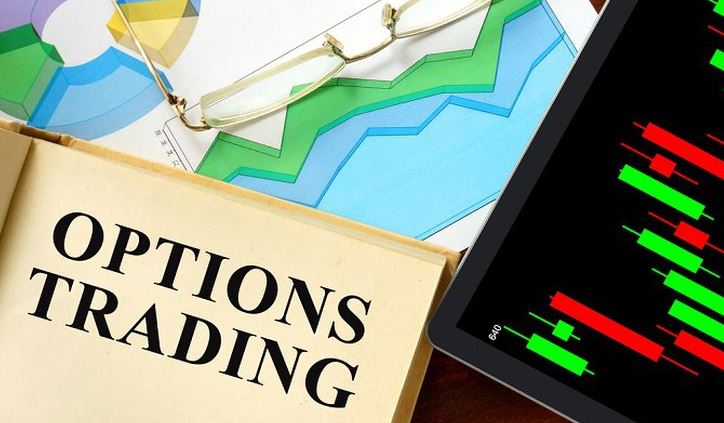The Terms You Need to Know to Get Started
Before you get started with the options trading that you want to do, it is important to stop and make sure that you know some of the terms. These terms is going to help you to know more about working in options trading, and can even help you out if you choose to work in a few other markets as well. We will also spend some time talking about these terms throughout this guidebook to help you with some of the tips that we will talk about as well. Some of the terms that you should know about when you are ready to get started with options trading includes:
Annual report
This is a type of report that a company is going to prepare in order to impress their shareholders and disclose a lot of financial information. It contains a lot of the information that you need to know about a particular company before you invest in them, whether it is stock trading, long term or short term trading, or options trading. Many times it is going to talk about the debt income about the company, its cash flow, and even the management strategy that it uses. When you spend some time reading this annual report, you should get a good look at the financial situation and company solvency before you invest.
Arbitrage
This is the process of purchasing and then selling the same security, but on different markets, and often at different price points. This can be used to help you make more money. You may find that one option is available for $10 on the first exchange, but then that same option is selling for $12 on another market. you would purchase it from the first market and then sell on the second one to make a profit.
Averaging down
Any time that an investor purchase more of a stock as the price drops, it is known as averaging down. This is going to make it so that the average price that you pay is going to decrease. You may end up working with this strategy if you believe that the consensus that is out there concerning a certain company is wrong, and you think that the price is going to rebound at a later time. You could purchase the option as the price goes down, taking it in at a good price, and then, when it rebounds, you will be able to take those profits.
Bear market
You will often hear about a bearish and a bullish market. When we talk about a bearish market, we are talking about when the market is going through a trend of falling and the stock prices are going to head south. If you notice that the price of a stock starts to plummet and go down, it means that it is very bearish.
Blue chip stocks
These are the kind of stocks that you will find behind some of the large, industry leading companies. They are able to offer you a stable record with higher dividend payments, and they already have a built up reputation of sound fiscal management. The expression is one that is thought to have come from blue gambling chips, which is the highest denomination of chips that you will see when gambling in the casinos.
Bull market
A bull market is another type of market that you need to pay attention to. When the stock market, all together, starts to go through a larger period of increasing stock prices, then you are in a bullish market. It is possible for the whole market to be bullish and for a single stock to be bullish as well.
Bid
The bid is going to be the amount of money that you as a trader are willing to pay for each share of a stock or another security that you want to work with. It is going to have to balance itself against the chosen ask price. This is the amount that a seller wants for each share of the same stock or security. The spread is going to be important as well because it is the difference that shows up between the ask price and the bid.
Leverage
One of the things that you can use when you are trading options is the idea of leverage. When you decide to use leverage when you trade, you are going to borrow the shares in a stock from the broker. The goal of doing this is to help you see an increase in the amount of profit that you are able to take in. if you are able to borrow shares and then sell them all for a higher price later on, you can then return the shares to the broker and keep any difference. But if things go wrong, it can really put your money and your account at risk, so it is often a dangerous game to play when you are a beginner.
Margin
A margin account is going to let you borrow some money, or take out a loan, from your broker. You will then use this in order to purchase the investment that you want. The difference that shows up between the amount of the loan, and the price that you pay for the securities, will be known as the margin. Trading on the margin can be a risky game to play, especially if you are a beginner. If you are unsuccessful with your trades, then you are going to lose out on a lot of money. You also need to have a minimum balance of capital in your margin account before the broker will consider doing this with you.
Portfolio
The portfolio of an investor is going to be the whole collection of investments that they own. You can have just one stock or security in your portfolio. But many successful traders have built up to having lots of different securities in their portfolio at the same time This helps to limit the amount of risk that they are dealing with, and makes it easier for them to make more profits in the process.
Short selling
When you decide to short sell one of your securities, it means that you are going to borrow shares from another person, with the promise of returning them to that person, usually your broker, at an agreed upon point down the road. You are then aiming to sell that option, and its underlying asset, for a profit. This is a great way for you to take advantage of any option and underlying asset that you think is going to decrease in price in the near future.
After you sell the short, you are then able to use the profits to purchase the shares at a lower price point. The difference that you get from the sale is going to be your price as a profit. This is a great move to make when you are working with a market that is volatile and when you know how to read the different patterns that are going to happen in the market. Just make sure that you account for the different fees and commissions that your broker will charge for borrowing the securities, and ensure that you are positive the market will go down and you will be able to make a profit on these in the process.
Spread
Another term that we need to know about is the spread. This is going to be the difference that shows up between the bid and the ask price. This can also be seen as the difference between the amount that someone is going to spend to get a security, and the amount that someone else is willing to sell that same security. SO, if the trader will purchase the option for $10, but the seller wants to get $12, then the spread is going to be $2.
A call option
A call is going to be the option contract that gives the trader the right, but they don’t have any obligation, to purchase a specified amount of the security that is attached to the option, usually a bond or a stock, at a specified price either during or on the expiration date. The price is going to be called the strike price, and then the time period is the auction.
If you are looking to purchase an option that gives you the right to purchase a specific security later on, then you are working with a call option. If the market behaves in the way that you would like, then you can exercise your right, either before or at the expiration date, in order to purchase them at the specified price, regardless of what the market value of them are at that time. But if the market doesn’t go the way that you want, you can walk away and just give up the premium that you paid in the beginning.
A put option
A put option is the opposite of what we saw with a call option. This one is going to give the owner the right, but no obligation, to sell a specified amount of a security at a specified price within a certain time frame. It is like a security policy on your portfolio and can ensure that you keep your losses to a minimum. The key takeaways to remember with the put option includes:
- These allow you to sell an underlying security under certain terms. You have to do it by the expiration date, otherwise the options contract terms won’t be valid.
- Put options can be used with lots of different assets. This includes things like currencies, commodities, indexes, and stocks.
- The prices of these put options are going to be affected by the price of the underlying asset, as well as time decay.
Time decay
Time decay is going to be really important when it comes to options and many of the strategies that you choose to work with. This will need to be considered when you are thinking about the potential profit and should take as much weight as the commissions and the fees that are assessed by your broker.
Time decay is going to be the inclination that your options are going to decrease in total worth as they get closer and closer to their expiration date. The extend of the time decay is going to be inversely connected to the changeability of that option. It basically means that if you have to wait all the way to the expiration date of the option, then it is automatically going to be worth less than before, and you may not make as much profit as before. Options are seen as wasting assets and they are going to see a loss in value the longer you have them. This is a phenomenon that is known as the time decay.
Diversification
Diversification is one of the different techniques that you can use in order to manage the amount of risk that you take in the market. Just choosing one stock or security and putting all of your money on that can be really risky. It is much better if you take the time to learn how to diversify and put your money in several different securities at the same time.
When you put all of your money on one security, you are running a big risk. This will result in a bit loss if that security doesn’t go the way that you want. It is much better to invest in two or three securities, and maybe more, even if you are only able to put a small amount towards each trade. As your capital grows, you will be able to diversify even more and increase your profits.
Volatility
Another thing that an options trader needs to pay attention to when they are ready to start trading is the amount of volatility that is found in the market. The volatility is going to be how much price movement is seen in the market. Low volatility means that there isn’t that much movement up or down, and high volatility means there is a lot of movement.
The securities that are considered highly volatile are the ones that have some extreme highs and lows during the day, or across several days. This is going to be common with some of the securities that are either dealing with a low trading volume or are thinly traded. It is also possible that you will find some market conditions or individual securities that don’t have a lot of volatility in them. It is important to know how the market is doing in terms of how much trading is going on, and then find ways to capitalize on this to make more money.
Volume
The volume in this market is going to be the number of shares of a stock that is traded during a specific period of time. It is often going to be measured in terms of the average daily trading volume. In some cases, the volume can also talk about the amount of shares that you purchase for a given stock. For example, if you decide to purchase 2000 shares of a company, this trade is going to be considered a much higher volume purchase compared to buying only 20 shares, or 100 shares.
Yield
This is often going to refer to the measure of the return on an investment that is received when the trader gets a payment off the dividend. This is going to be determined when you divide the annual dividend amount by the price paid for the stock. So, if you purchased a stock for $40 a share, and it pays out $1.00 per year in dividends, then you have a yield of 2.5 percent
Trading plan
A trading plan is going to be very important when it comes to working on your trading strategy. You must make sure that you are coming up with a full plan that discusses how much risk you are willing to take on with each trade, when you will enter into the market, and the profit target and stop loss target. This needs to be done before you enter into the market at all.
Each trade that you accomplish should have one of these
trading plans. You can set it up based on what you see in the market. Or you
can pick out a strategy that you want to use and then choose to work with a
trading plan that matches up. The most important thing to do here is that once
the plan is set up, you need to stick with it. Don’t let your emotions become a
part of the game, or you will end up putting your trades at risk and losing
out.




